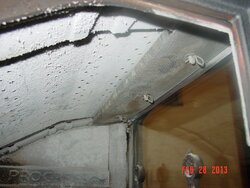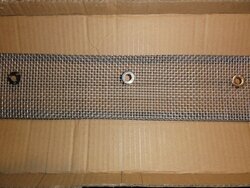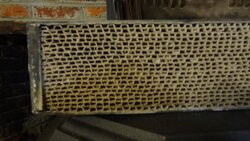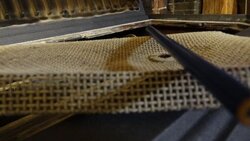I have been battling a smoke smell since almost the time I got my PH installed. At first I thought it was the cooktop - my first top was warped along the front edge, and I thought that was the problem. It failed the dollar bill test miserably. New top and gasket helped, but the smell was still there. So, with Lorin's advice, I used a towel and narrowed the smell down to the door side of the stove, not the top. So, I redid the door gasket, but it didn't help. So I sought Lorin's advice again. WS is theorizing that the smell is coming from where the door frame meets the steel shell of the stove. And they have been testing a sealant to seal up this leak.
I think, but I'm not sure, that they are talking about the joint where the door frame meets the fireback/secondary tubes. You know that little triangle on the top of the door, hinge side. The triangle that makes the opening not square. I seem to get a lot of build up right there, and I think that little opening is creating a little chimney. I know it's counter-intuitive, but if smoke/odors get into that gap, then they can work upward, either exiting around the top of the door frame or at the very top of the door side, coming out between the exterior soapstone and the top. Take a towel and hold it against the union between the side and the stop, above the door. The smell goes away for me.
I do not think it's the door gasket. I bought some gasket tape.... flat gasket material. I draped it over the hinge side gasket, and looped it around the back of the door so I could hold it tight to the gasket and shut the door. Then after the door was shut (took some pushing) I stuffed the rest of the 6' gasket in the gap between the door and the frame. All around the door. Did this multiple times, and it didn't fix the smell.
So, I'm eagerly awaiting Lorin's email this week. Hopefully the new sealant they are testing will be approved and they will ship out. If I can't get this issue resolved before the end of the heating season, the stove is going back. The smoke smell is playing havoc with my sinuses.
And before you ask..... I do have an ashpan. I back vent into an insulated chimney liner going into an exterior masonry flu via a T in my firebox. The liner is right at 20'. I also have an OAK. My house is pretty tight, so I've burned with a window cracked, window closed, HVAC fan on and off, OAK hooked up and not. Nothing fixes the smoke smell.
I have been getting 8-10 hour burns with pine, so I'm happy with burn times considering it's pine. I love the stove, and don't want to send it back. But I also can't live all winter with sinus issues.
As for my CAT and screen, no issues at all. I've checked the CAT twice and didn't even have to clean it. I have brushed the screen off a few times. I don't think I have an incredible draft like some on here. Before reloads, when I open the air, ash doesn't swirl around like other have described. I actually have a small problem with ash coming out the door when I open to reload and stir the coals. Not much, but enough to notice. I kind of wonder if this isn't a result of the pine I'm burning, creating finer ash? (pine is under 20%, and I cleaned the flu after my first month's burning and only got a cup of very fine powder)





